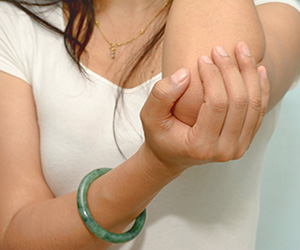Physical Therapy for Tendinitis
Tendinitis vs. Tendinosis:
 When one hears “tendinitis” one thinks pain and burning in an affected area, decreased strength and flexibility, and pain caused by everyday activities. Tendinitis is a very common diagnosis, but, frequently, “Tendinosis” is more likely responsible for these symptoms than tendinitis. It is important to distinguish between these disorders in order to apply the most appropriate treatment.
When one hears “tendinitis” one thinks pain and burning in an affected area, decreased strength and flexibility, and pain caused by everyday activities. Tendinitis is a very common diagnosis, but, frequently, “Tendinosis” is more likely responsible for these symptoms than tendinitis. It is important to distinguish between these disorders in order to apply the most appropriate treatment.
Tendinitis is the irritation or inflammation of a tendon, the soft tissue structure that attaches muscles to bones. Many tendons are located between two bones, much as your sock is located between your heel and your shoe. With repetitive motions, micro-tears occur; the tendon can “wear out” and become frayed, just like a sock may over time. Tendinitis can occur at any tendon in the body, but the most common locations include the shoulder (pitcher’s shoulder, dog leash shoulder, swimmer’s shoulder), elbow (tennis elbow, golfer’s elbow), knee (jumper’s knee), and ankle (Achilles tendinitis). Common symptoms include pain described as a dull ache that is made worse with movement, tenderness, and sometimes mild swelling.
Tendinosis, sometimes called chronic tendinitis, or chronic tendon injury, is damage to a tendon at a cellular level. It is thought to be caused by micro tears in the connective tissue in and around the tendon. There is a degeneration of the tendon’s collagen in response to chronic overuse; when overuse is continued without giving the tendon time to heal and rest, such as with repetitive strain injury, Tendinosis results. Even tiny movements, such as clicking a mouse, can cause Tendinosis, when done repeatedly.
If your symptoms interfere with daily activities for more than a few days, you may need additional care such as physical therapy. Physical therapist will use manual therapy, modalities, and exercise to address your symptoms, stretch tight muscles, and strengthen weak muscles to prevent re-occurrence of your condition. Through a customized program you will be educated on body mechanics and exercises that specifically address your impairments. You can expect to be seen on average 2-3x/week for 1-2 months depending on the severity of your symptoms.
